Contents:
If you have a habit of checking your pocket change before tossing it into the jar, you might want to keep an eye out for the 1977 penny. Yeah, it looks like any other copper-colored cent. Nothing cool or rare. But because some of these coins can be worth way more than a single cent. Yep, seriously.
This little coin has a lot of hidden surprises. You just will have to look at where it was minted, how it was struck, and what kind of oddball errors it might carry. If you’re just starting your collection or you’ve been stacking coins since you were a kid, the 1977 penny value might surprise you. Some 1977 D or proof strikes from San Francisco can sell for premium prices.
Want to check your coin? There are two ways: long and short. If you need maximum precision, you will have to take it to the specialist. But, if you want to check it immediately and get an approximate price, there is a solution - Coin ID Scanner app. It’s an application which will give you an instant result based on AI technology. It's best if you need a digital collection and fast new coins scan.
Even the more common 1977 penny no mint mark, made in Philadelphia, has value if it’s in Mint State condition. And if you happen to find a well-preserved 1977 penny, don’t overlook it, the value climbs quickly once you get into the higher uncirculated grades.
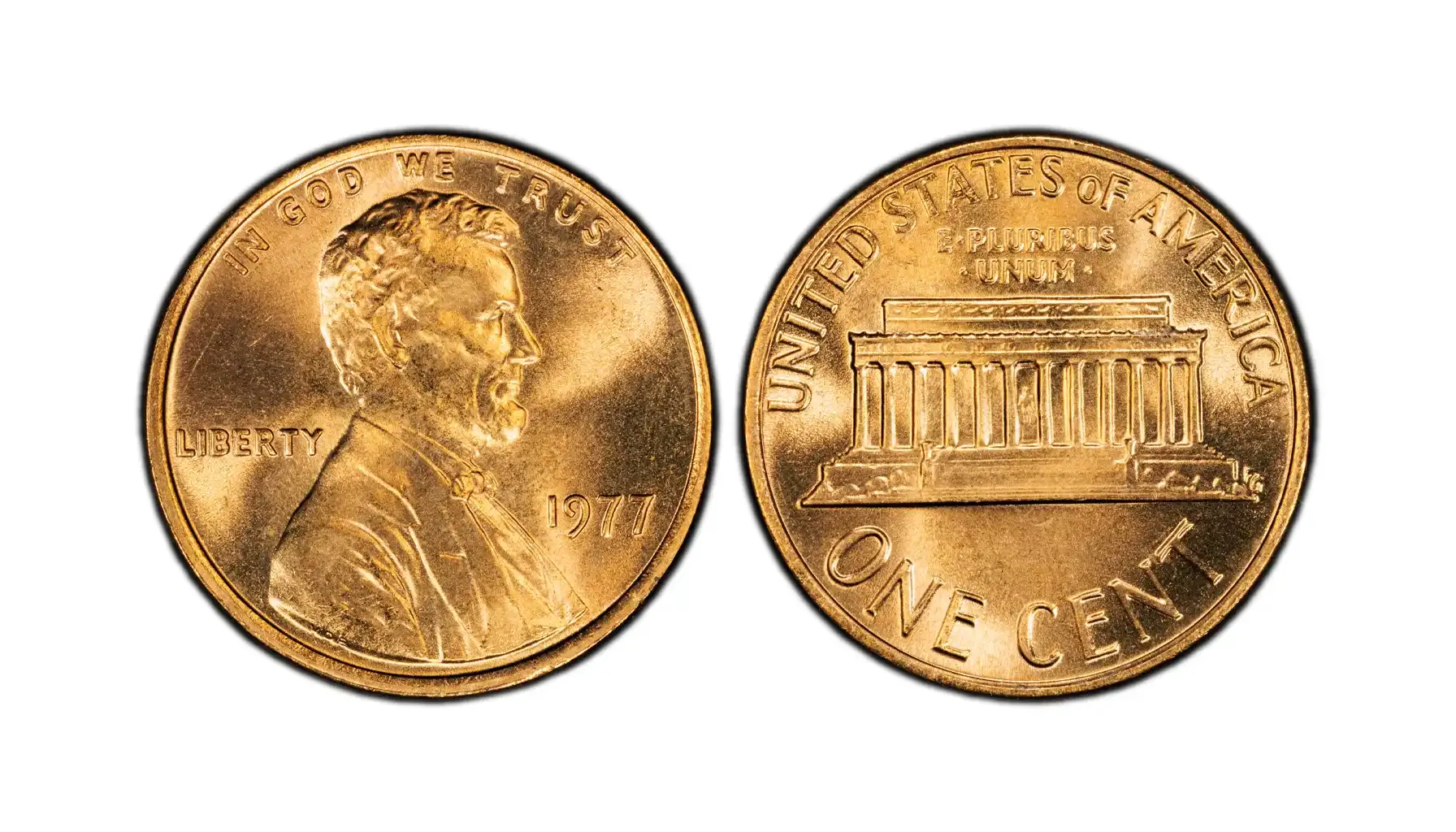
A Brief History of the Lincoln Penny
The 1977 penny is part of a long-running coin series that began in 1909 to honor the 100th birthday of Abraham Lincoln, the 16th President of the United States.
The original design by Victor D. Brenner featured Lincoln’s bust on the front and two wheat ears on the back. Lincoln’s leadership during the Civil War and his efforts to end slavery, through the Emancipation Proclamation of 1863, made him an enduring figure in American history. Though his presidency ended tragically in 1865, his legacy lives on, in part through coins.
In 1959, to mark the 150th anniversary of Lincoln’s birth, the U.S. Mint updated the penny’s reverse. The familiar wheat design was replaced with an image of the Lincoln Memorial, created by Frank Gasparro.
Look closely at the back of your coin and you’ll notice something unusual, Lincoln is visible inside the monument. This made the coin the first U.S. piece to feature the same person on both sides.
This design lasted until 2008. In 2009, a series of four commemorative reverses marked Lincoln’s 200th birthday, and in 2010, the Shield reverse was introduced.
1977 Lincoln Penny Types
Mint Location | Type | Mintage |
Philadelphia 1977 | no mint mark | 4,469,930,000 |
Denver 1977 D penny | — | 4,149,063,300 |
San Francisco 1977-S | Proof | 3,251,152 |
Total | — | 8,622,244,452 |
With billions of coins produced, most 1977 pennies aren’t rare. But the 1977 D penny value in mint condition can reach $30 or more.
Here’s a quick reference chart for this coin:
Feature | Description |
Denomination | One cent |
Composition | 95% copper, 5% zinc |
Weight | 3.11 grams |
Diameter | 19 mm |
Thickness | 1.52 mm |
Obverse Designer | Victor D. Brenner |
Reverse Designer | Frank Gasparro |
Edge | Plain |
Mint Marks | None (P), D (Denver), S (San Francisco) |
Years of Design Use | Obverse: 1909–present Reverse: 1959–2008 |
Value by Mint Type
1977 No Mint Mark (Philadelphia)
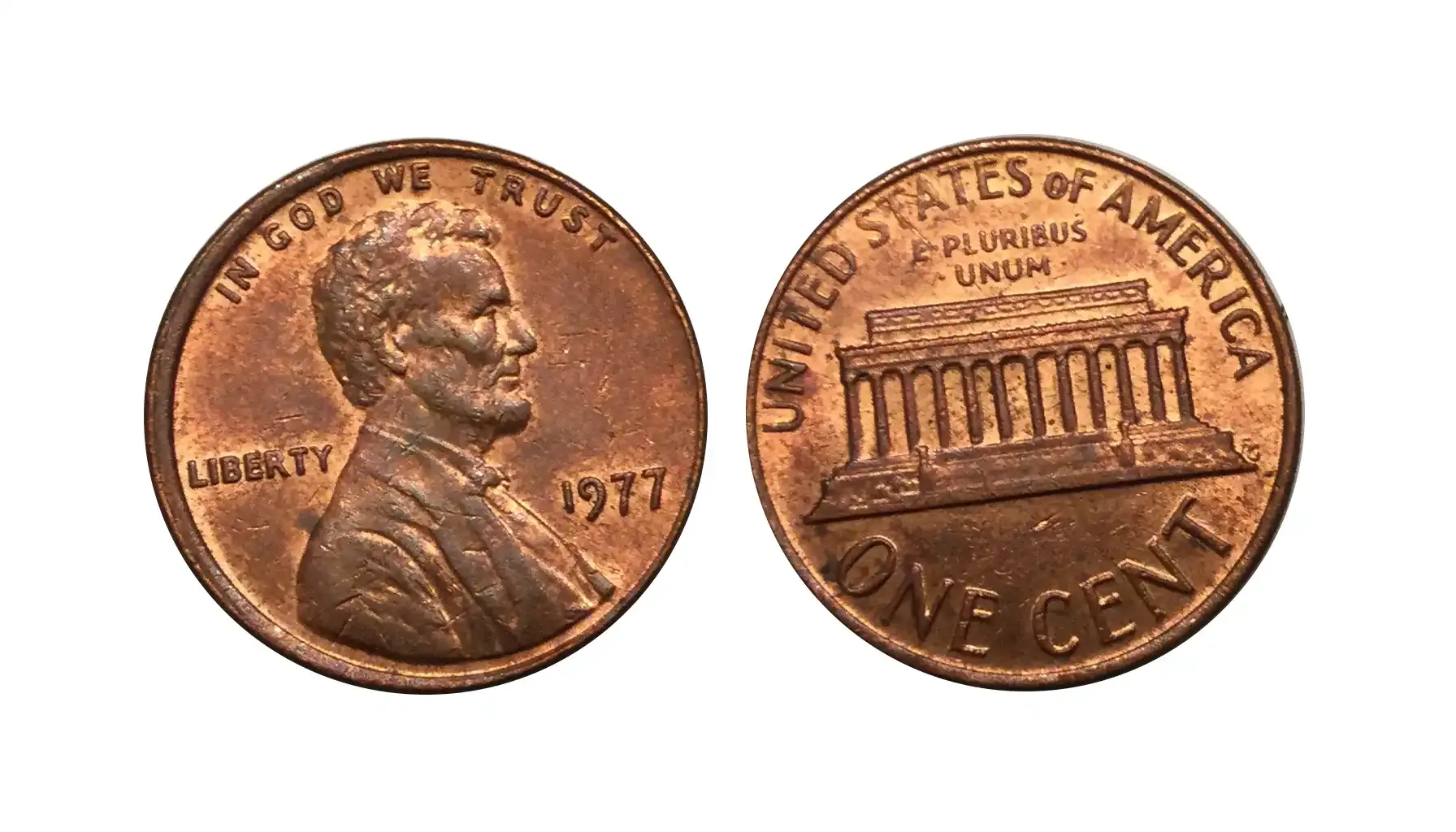
Common in circulation, but top-grade examples can bring serious money:
MS63: $3
MS64: $6
MS65: $18
MS66: $47
MS67: $200
MS68: $3,150 (record auction)
1977-D (Denver Mint)
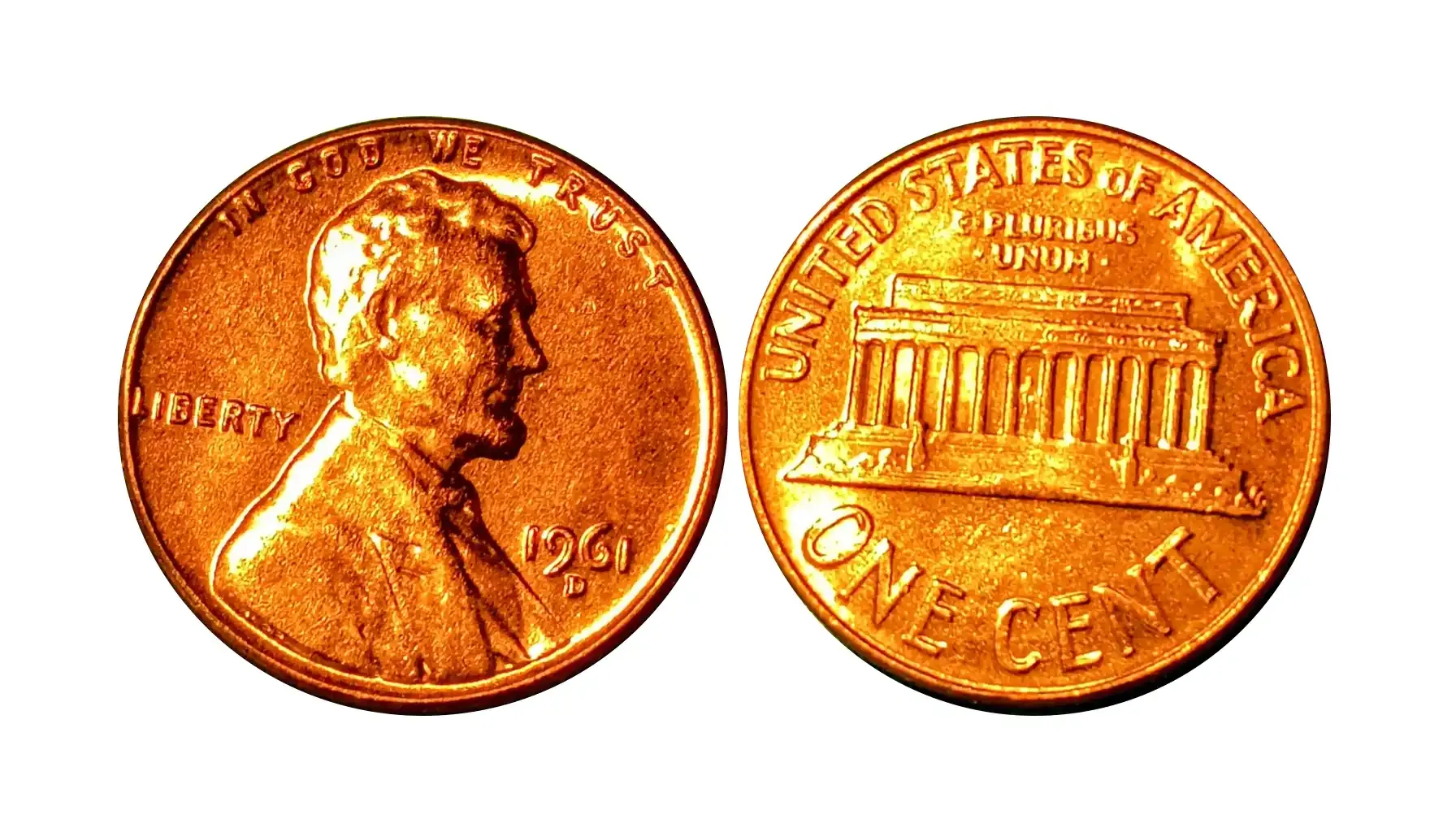
Known for more striking issues and a few rare gems in high grade:
MS63: $8
MS64: $14
MS65: $24
MS66: $60
MS67: $240
MS68: $7,000 (record auction)
1977-S Proof (San Francisco)
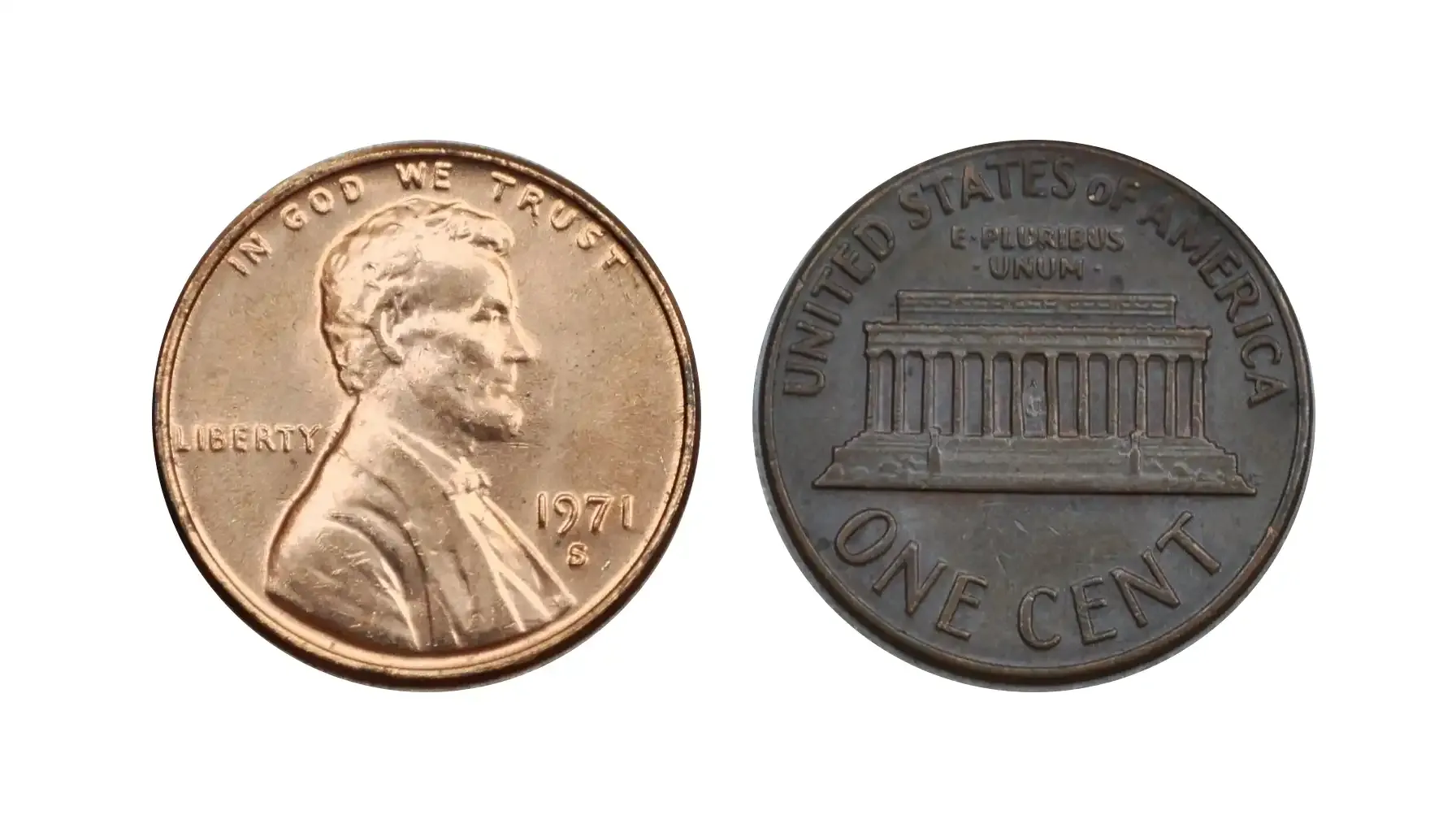
Proof-only issue with high demand among collectors:
PR64-PR68: $5–$8
PR6: $22
PR70: $1,800 to $7,000 (depending on condition)
Error Varieties Worth Spotting
If you’re wondering why the 1977 penny worth so much, in many cases, the answer lies in these kinds of errors.
1977 Double Die Penny (Obverse). This is one of the most sought-after errors on the 1977 penny. You’ll notice extra lines or shadowing in the date (“1977”) and in inscriptions like “LIBERTY” and “IN GOD WE TRUST.” These doubling effects can vary, but the strongest examples have sold for hundreds. While not every doubled die is worth a fortune, collectors frequently use a 1977 penny error list with pictures to identify the good ones.
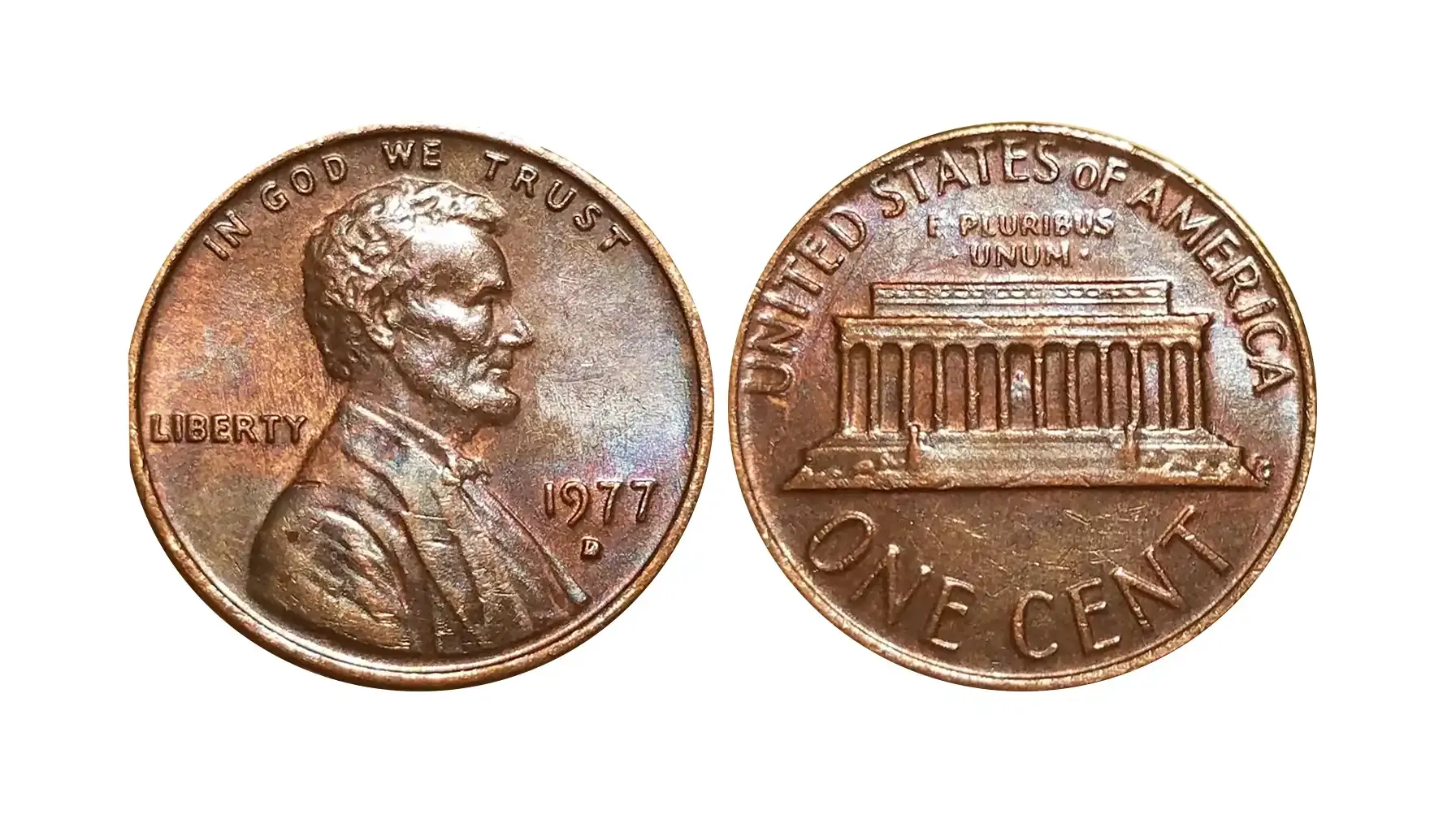
Off-Center Strikes. If the coin’s design is shifted noticeably off-center, you may have a winner. Coins with a 10–20% off-center strike that still show a full date are especially collectible. These kinds of errors can add $20 to $100+ to the 1977 penny value, depending on how dramatic the misalignment is.
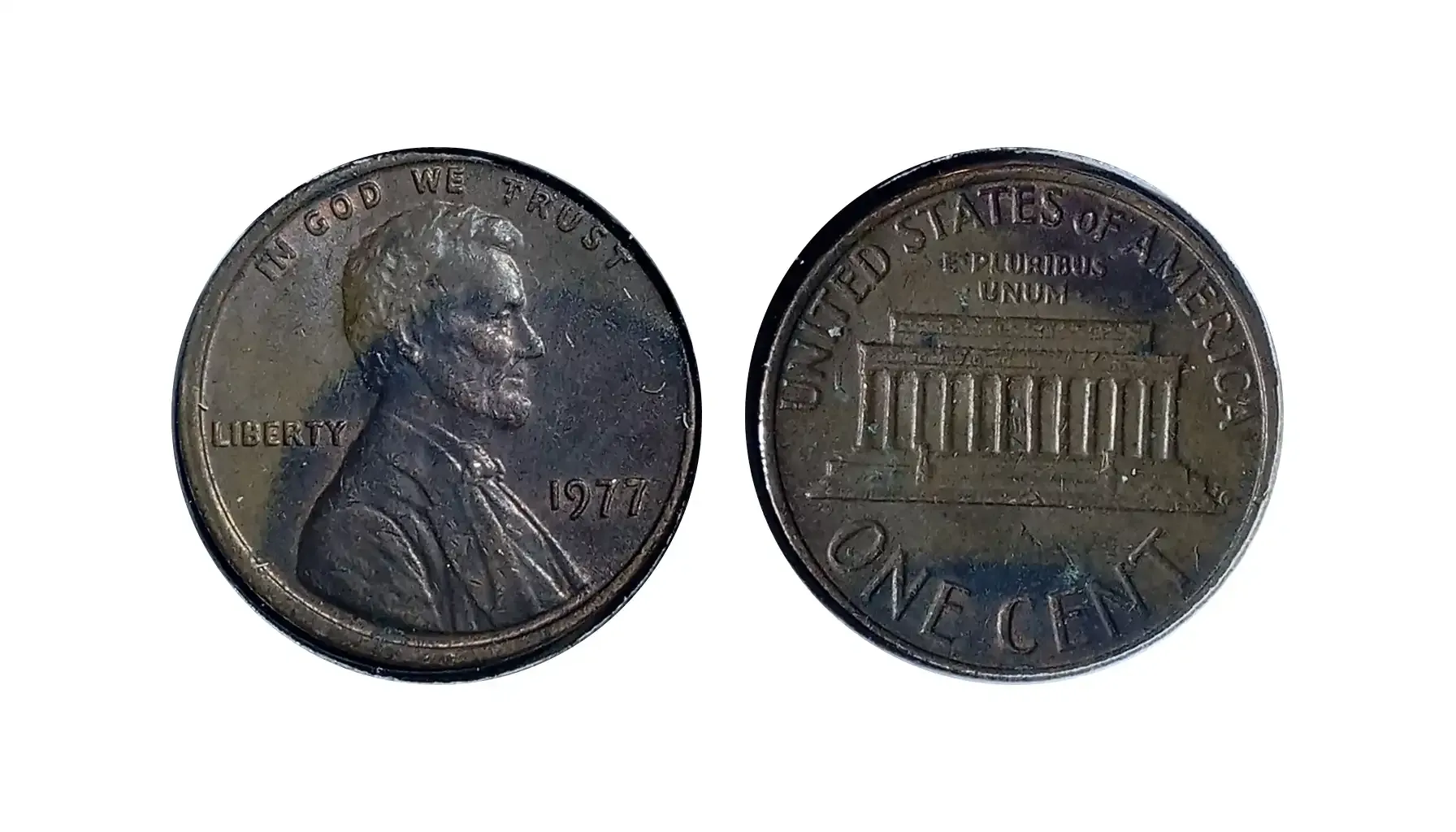
Clipped Planchets. This error occurs when part of the penny’s metal blank is missing during the minting process. A coin that looks like it has a crescent-shaped bite taken out of it. This is one of the more easily visible mistakes, and it often fetches $10–$75+ based on how clean the clip is.
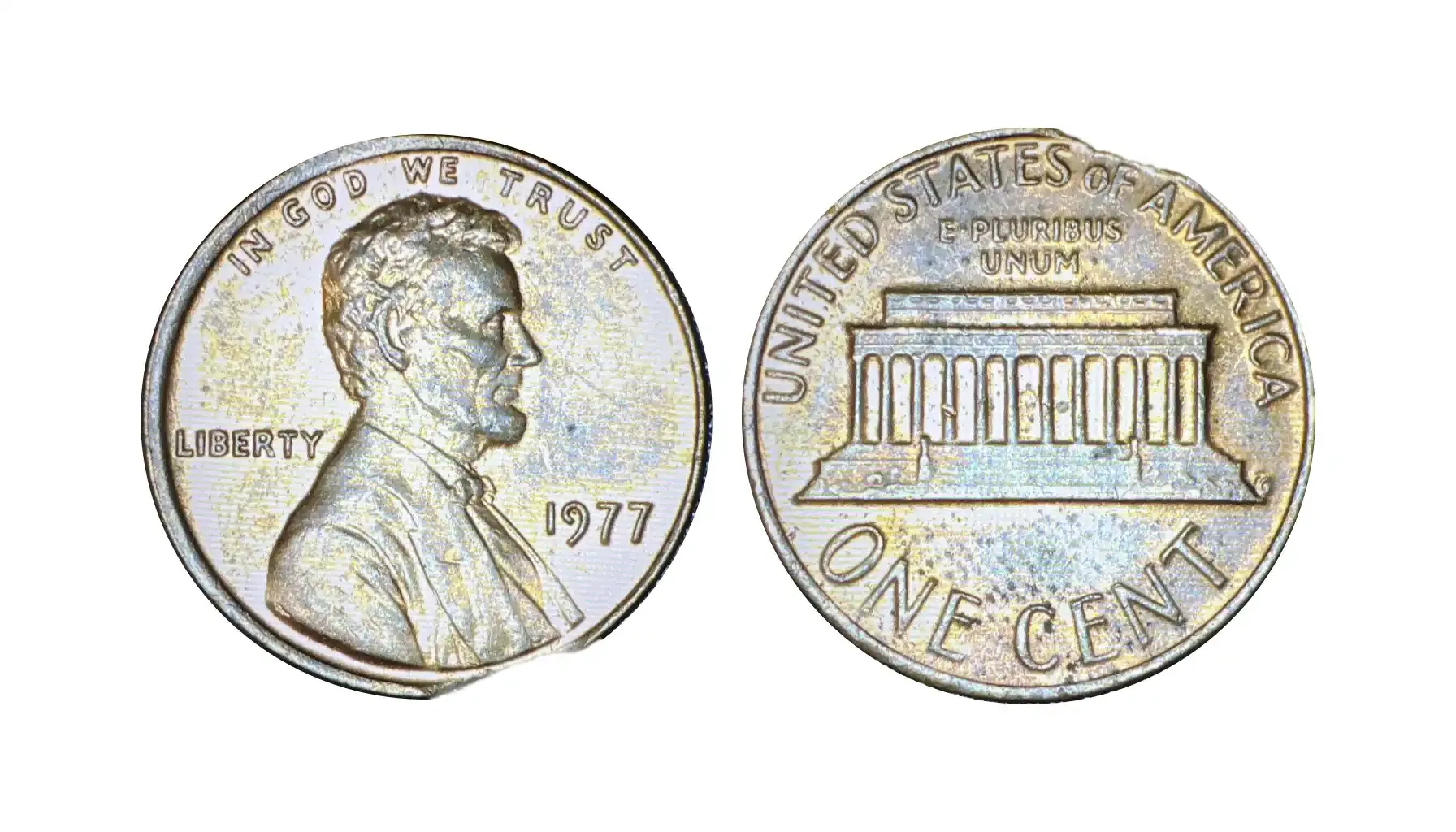
If you're examining a 1977 no mint mark penny, keep a sharp eye out. While most were made in Philadelphia and are common, some error varieties can greatly boost their value. And for collectors checking how much is a 1977 penny worth, error coins are usually at the top of the price chart.
Some collectors confuse this coin with the 1977 50 cent piece (Kennedy Half Dollar), which is a different coin entirely. It doesn’t belong to the Lincoln series but is sometimes mentioned by new collectors looking for valuable finds from the same year.
What Affects Value?
Is a 1977 penny worth anything? The short answer is: yes, it can be. But like most collectible coins, the 1977 value depends on several details. Even though billions were minted, the right features can push this little cent far above face value. If you already know the price, you might want to read about Where Can I Sell My Coins Online?
Mint Mark
No mint mark (Philadelphia): are the most common. A 1977 no mint mark found in your change is probably worth 1 cent. But in pristine, red condition graded MS65 or better, these can go for $5 to $15. Want to know the 1977 penny value no mint mark? Start by checking its color and grade.
D mint mark (Denver): the 1977 D is also common, but collectors like this version in Mint State. If you have a shiny red 1977 penny D graded MS66 or higher, its value can jump to $10–$30. Mint errors or strong eye appeal can push that even higher.
S mint mark (San Francisco): the 1977 S penny wasn’t made for circulation, it’s a proof coin created for collectors. These shiny coins have sharper details and mirror-like surfaces. A 1977-S proof graded PR69 or PR70 Deep Cameo could be worth $15 to $80 depending on the market and condition.
Condition & Grade
A high-grade 1977 Lincoln with full red color and no visible damage can sell for much more than a worn one.
Red (RD): the bright red luster from the mint is what collectors want. A clean, red 1977 D in MS67+ can be quite valuable
Red Brown (RB): a coin with some fading or brown tones is less desirable but still collectible in Mint State
Brown (BN): circulated coins with a duller tone are the least valuable, but they’re still worth checking, especially for errors
Grading services like PCGS or NGC use a scale from 1 to 70. Coins graded MS65 and up (or PR69–70 for proofs) are typically more in demand
Errors & Varieties
The 1977 penny error list has some eye-catching mistakes that can boost a coin’s worth.
1977 Double Die Penny (Obverse): look at the date or lettering. Doubling is a known error and can raise value significantly
Off-center strikes: misaligned designs are collectible. The more off-center (while still showing the full date), the higher the value
Clipped planchets: crescent-shaped cuts on the edge is what makes them unique
Struck through grease: these look faded or weak due to debris in the minting process. They're subtle, but collectors still want them
And a quick note: while the 1977 50 cent coin value applies to the Kennedy Half Dollar, not the Lincoln cent, many new collectors ask about it when researching coins from that year. Read about 13 Valuable Kennedy Half Dollars to know more.
Proof vs. Circulation Strike
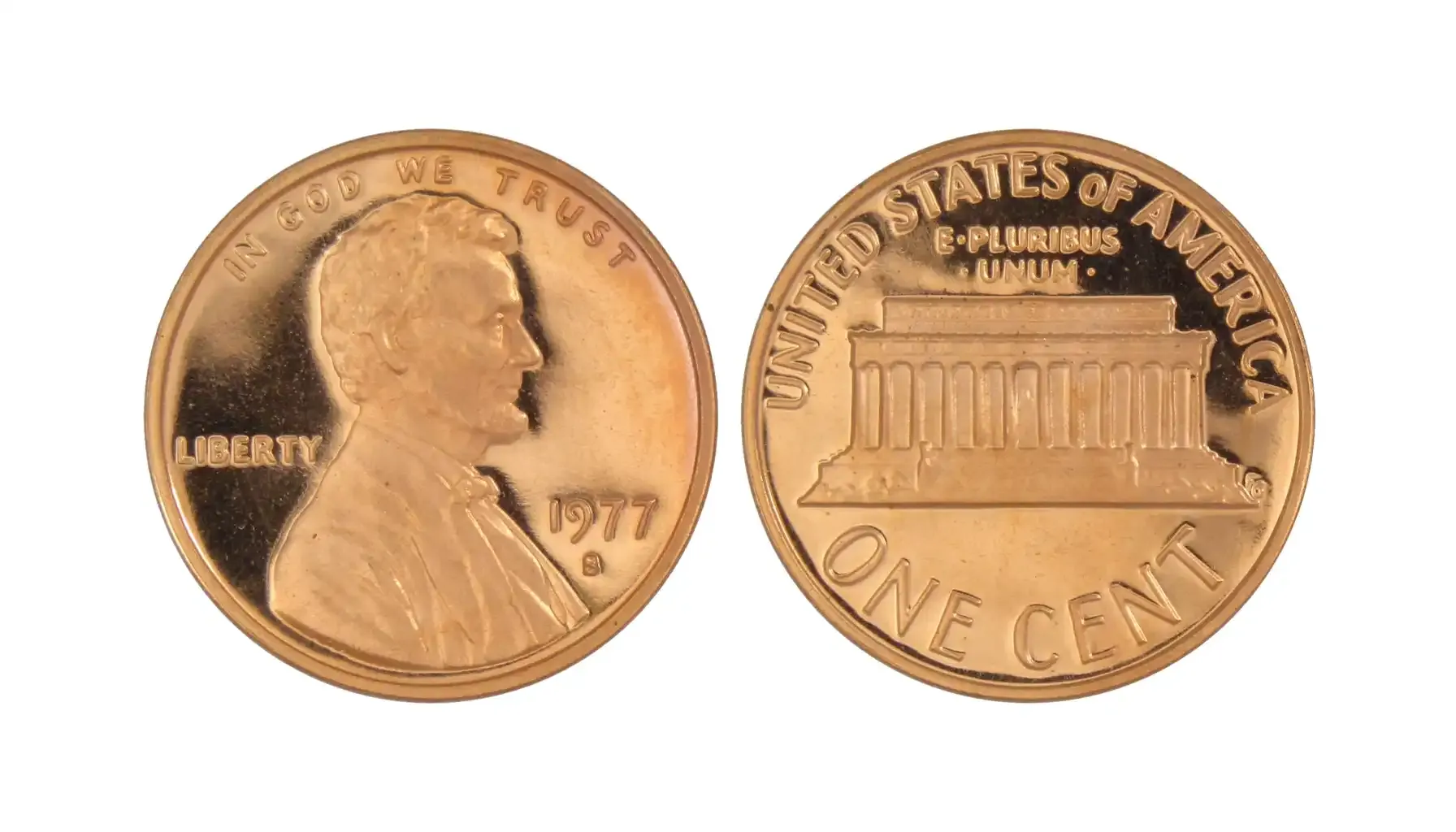
Proof coins are made differently, they are struck using special dies and polished blanks. These are made for collectors and not meant to be spent.
A 1977-S can be easily spotted by its mirror finish and precision. While millions were made, only a few survive in PR70 Deep Cameo grade. Circulation strikes like the 1977 D and 1977 no mint mark were made in massive numbers, so only high-grade examples or errors stand out in value.
To evaluate these errors accurately, compare your coin to verified listings from PCGS or NGC. If it looks off, it’s worth getting a second opinion, you might be sitting on a small treasure. To know what you need, read about PCGS CoinFacts vs. Coin ID Scanner: Which App is the Best?
Conclusion
So, is a 1977 penny worth anything? Absolutely, but, under the right conditions. With over 8.6 billion minted, you’re likely to meet one in a drawer or coin jar.
But not all pennies are created equal. An error, sharp strike, or pristine condition is what adds to the value. And if you have one, you better check if it is worth more through the app or a specialist. There are also other years of American pennies that can be pretty valuable, so, if you won’t find anything in 1977, there are lots of years to discover.



